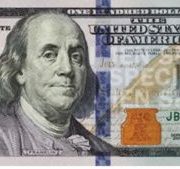All of the high-grade paper used by the US Treasury to print money is bought by one firm, Crane & Co., which has been in the same family for seven generations.
Last year, the Feds printed 38 million banknotes worth $639 million. Although we have seen the Fed’s severe monetary tightening cause the money supply to fall off a cliff, the administration’s recent reflationary efforts have spurred a big increase in demand for paper for $100 dollar bills.
The US first issued paper money in 1861 to finance the Civil War, and Crane has been supplying them since 1879.
The average life of a dollar bill is 21 months. Who said no one was doing well in this economic slowdown? M1, or notes and coins in circulation, is already exploding, that to 14 years of quantitative easing. Is this a warning of an imminent jump in inflation?
In the meantime, check out the new 3D $100 bill. It includes the latest anti-counterfeiting techniques, like a new blue security strip, tiny liberty bells that morph into the number 100, and “United States of America” micro-printed on Franklin’s jacket collar. The new bills started entering circulation in 2013.
It’s ironic that the balanced scales, a symbolic reference to the founding fathers’ commitment to maintaining a balanced budget, are still on the new Benjamin, now that we have a $31 trillion national debt that is growing rapidly.
Old Ben must be turning over in his grave.





